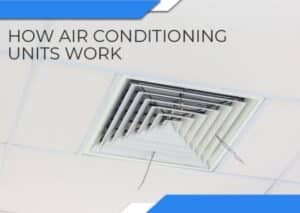
How Air Conditioning Units Work
The inner workings of any air conditioning unit are fairly straightforward. You’ll find many parts such as the heat exchange pipes, a refrigerant tank, and an air conditioner damper motor that look complex at first glance. However, a closer examination will show you that it’s not as complicated as one would think. Let’s understand how a basic air conditioning unit works and perhaps, in the future, we can communicate better with AC repair technicians once issues begin to arise. Parts of an AC Unit As with all thermodynamic systems, the basic parts are similar in many respects. The air conditioner damper motor acts as a valve that allows or restricts airflow based on the needs of the machine. The heat exchange and heat sink function to transfer heat from one area to another and the refrigerant acts as a “carrier agent” for heat. The motor itself powers the mechanism, which is basically an air intake and output pump. Induction Motors Most battery-driven devices rely on direct current, or DC, as a power supply, but for large appliances in a household, an alternating current, or AC, is commonly used. The differences between these two dictate the way that a motor works. In an AC

